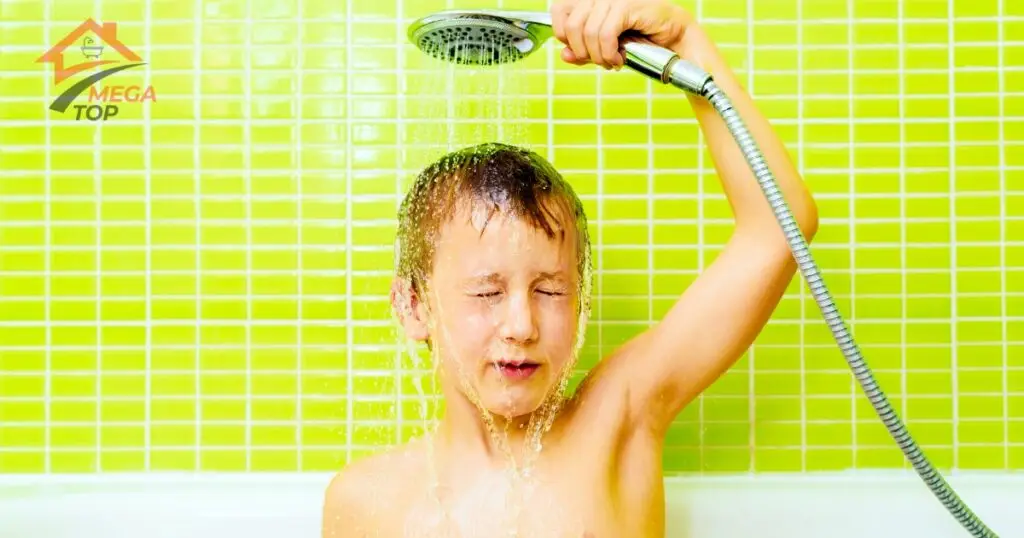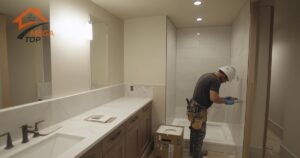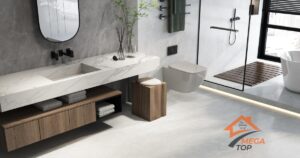Deciding If a Bath-to-Shower Conversion Is Right for You
Converting a bathtub to a shower is a popular home improvement project that can modernize your bathroom and enhance functionality. Before diving into the process, understanding the reasons and benefits behind the conversion is essential.
Why Convert Your Bath to a Shower?
There are several advantages to switching from a bathtub to a shower:
- Space-Saving: Showers typically occupy less space, which can make your bathroom feel larger.
- Improved Accessibility: Showers, especially walk-in models, are easier to access than traditional tubs, making them a great option for seniors or those with mobility issues.
- Modern Aesthetic: Showers offer a sleek, contemporary look that can elevate the overall appeal of your bathroom.
Types of Showers for Bath-to-Shower Conversions
Different shower types can suit specific needs and preferences. Common options include:
- Walk-In Showers: These are easy to access and are often designed without doors or thresholds.
- Enclosed Showers: Enclosures with glass doors help contain water and can offer a modern, elegant look.
Planning a Bath-to-Shower Conversion
Proper planning ensures a smooth conversion and a functional, stylish shower space.
Assessing Bathroom Space and Layout
Measure your bathroom space to determine the best position for the shower. The existing plumbing location can influence where the new shower will go and help avoid extensive rerouting.
Choosing Shower Types and Styles
Consider the aesthetic and practical features for your new shower:
- Glass Enclosures: Create an open feel and offer a minimalist look.
- Tile and Material Options: Ceramic, stone, or acrylic wall panels can personalize your shower and enhance durability.
- Shower Heads and Fixtures: Explore rain shower heads, handheld options, or dual systems for a luxurious experience.
Considerations for Accessibility and Safety
If accessibility is a priority, choose features that add comfort and security:
- Grab Bars: Provide support while entering or exiting the shower.
- Anti-Slip Flooring: Reduces the risk of slipping, especially in wet conditions.
- Bench Seating: Adds a convenient seating option, ideal for relaxation or assistance during bathing.
Cost to Convert Bath to Shower
The cost of a bath-to-shower conversion varies based on materials, labor, and complexity.
Factors Affecting Conversion Cost
Several factors influence the overall cost of converting a bathtub to a shower:
- Materials: Tile, glass, and other materials differ in price. Natural stone or custom tile can increase costs.
- Labor: Professional installation costs vary but provide expert handling of plumbing and structural adjustments.
- Plumbing: Adjusting plumbing lines or drain positioning adds to the budget, especially if it requires permits or extensive rerouting.
DIY vs. Hiring a Professional: Cost Comparison
DIY conversions can save on labor but come with potential risks. A professional installer ensures a reliable setup, which may save you from costly repairs down the line.
Bath-to-Shower Conversion Steps
Here’s a step-by-step overview of how to convert a bathtub into a functional shower.
Step 1: Remove the Bathtub
Start by detaching and removing the existing bathtub:
- Turn off the water supply and disconnect plumbing connections.
- Carefully remove the tub surround or tiles around the bathtub.
- Extract the bathtub, taking care to protect surrounding fixtures.
Step 2: Prep and Reroute Plumbing
Once the tub is removed, the plumbing needs to be adjusted to accommodate a shower setup.
Plumbing Adjustments and Permits Needed
- Drain Positioning: Shower drains are typically centered and may need repositioning.
- Permits: Check local regulations; most areas require permits for plumbing modifications.
Step 3: Install Shower Pan and Waterproofing
Proper waterproofing is crucial for preventing water damage.
Types of Shower Pans and Waterproofing Techniques
- Shower Pans: Choose from prefabricated acrylic or tile-ready pans. Prefab pans simplify installation, while tile-ready pans allow for custom tiling.
- Waterproofing Methods: Use a waterproof membrane to seal the floor and walls. This is especially important behind tiles to prevent mold and leaks.
Step 4: Add Tile or Shower Wall Surround
The shower walls create the aesthetic and functional finish of the conversion.
Pros and Cons of Tile, Acrylic, and Stone Surrounds
- Tile: Offers customization options and is durable but requires grout maintenance.
- Acrylic: Simple to install and easy to clean, making it a cost-effective option.
- Stone: Provides a high-end look, though it may be pricier and require additional sealing.
Step 5: Install Shower Fixtures and Accessories
Install the showerhead, valve, and any additional features you’ve chosen, like shelving or a handheld fixture. Ensure each component is securely attached and checked for leaks.
Final Touches and Safety Enhancements
Add the finishing details to complete your shower conversion.
Installing Shower Doors or Curtains
Choose between glass doors or shower curtains:
- Glass Doors: Frameless glass doors create a spacious look and contain water effectively.
- Curtains: Budget-friendly and easily replaceable, though they may require a waterproof liner.
Adding Finishing Touches: Shelving, Lighting, Ventilation
Consider these finishing touches for functionality and comfort:
- Built-in Shelving: Provides convenient storage for shower products.
- Lighting: Good lighting enhances the shower experience and safety.
- Ventilation: A proper exhaust fan helps reduce humidity and prevents mold growth.
Common Mistakes to Avoid During Conversion
Avoid these common errors to ensure a successful shower conversion.
Inadequate Waterproofing
Skipping waterproofing steps can lead to costly water damage. Invest time in waterproof membranes and sealants around all shower areas.
Ignoring Accessibility and Safety
Overlooking safety features like grab bars and non-slip flooring can impact the shower’s usability. Adding these elements increases functionality and peace of mind.
Overlooking Drainage Needs
Proper drainage is critical. Make sure the drain size and placement match shower specifications to avoid clogs or water pooling.
DIY vs. Professional Bath-to-Shower Conversions
Evaluating the pros and cons of DIY vs. professional conversions can help you make the right decision for your project.
Pros and Cons of DIY Conversion
DIY Pros:
- Cost Savings: Avoiding labor fees can save money.
- Flexible Schedule: Complete the project at your own pace.
DIY Cons:
- Complexity: Plumbing and waterproofing require skill and knowledge.
- Risk of Mistakes: Errors can lead to expensive repairs or water damage.
Benefits of Hiring a Professional for a Seamless Result
Professionals bring expertise in plumbing, waterproofing, and construction, ensuring a seamless finish. Hiring a pro reduces the risk of costly errors, as they follow best practices and manage permits and inspections.
Case Study: DIY vs. Professional Conversion Outcomes
- DIY: Many homeowners report longer completion times and occasional repairs due to plumbing or waterproofing issues.
- Professional: Professional installations tend to result in fewer issues, higher resale value, and a more polished, cohesive appearance.
Converting your bath to a shower can transform your bathroom’s look and functionality, enhancing both the style and convenience of your space. With the right planning and expert help, you can enjoy a sleek, modern shower that meets your needs for years to come.
FAQ
Costs vary based on materials and labor, but typical conversions range from $1,500 to $7,000.
A professional conversion can take 2-5 days, while DIY conversions may take longer depending on the remodel complexity.
Most bathtubs can be converted, though the layout and plumbing access will influence design choices.
Yes, walk-in showers are ideal for accessibility, especially if they include features like grab bars and anti-slip flooring.
Permit requirements vary by location, especially if plumbing is involved. Check local regulations before starting the project.





